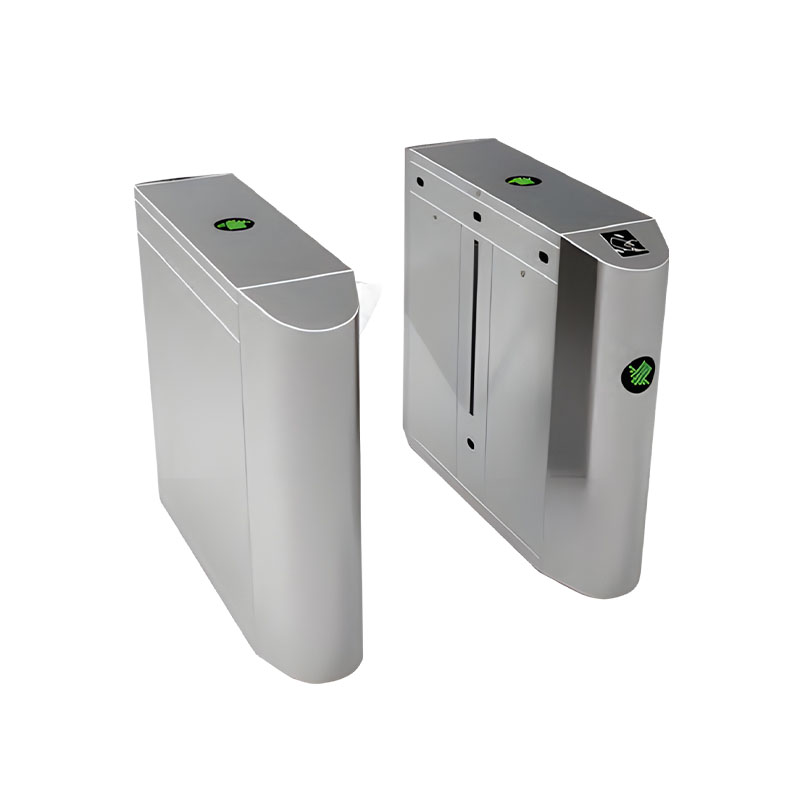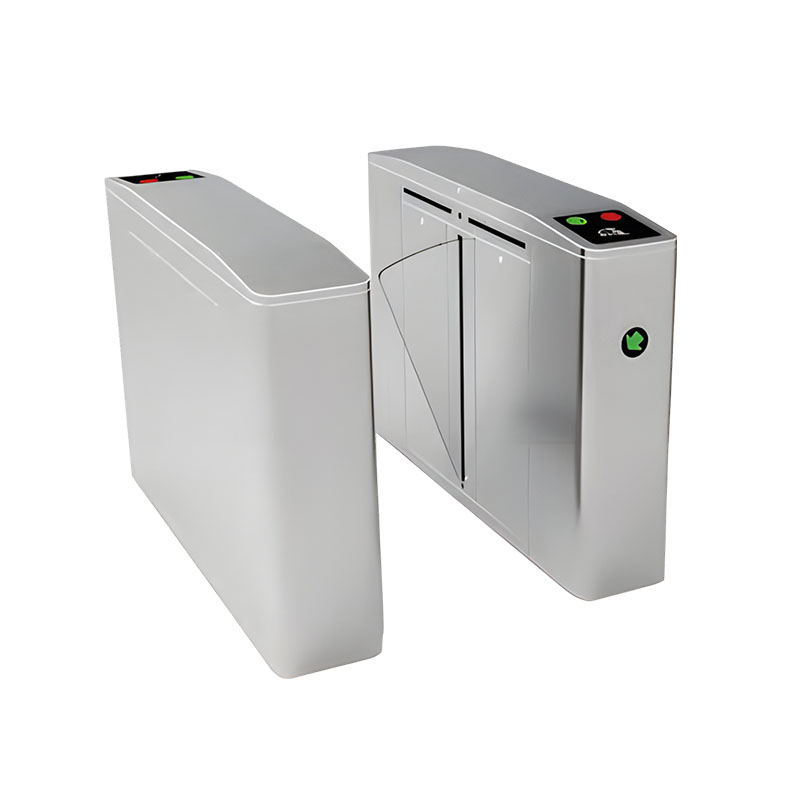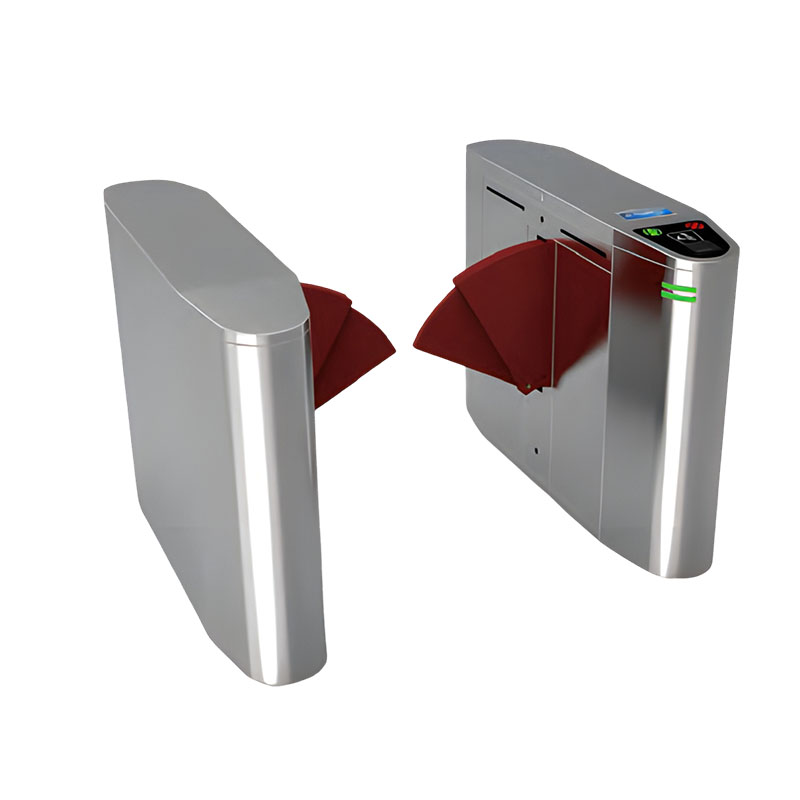How do pedestrian access gates respond to malicious attacks and unauthorized entry?
Release Time : 2025-11-17
In today's increasingly sophisticated smart security systems, pedestrian access gates are not only "guides" for pedestrian passage but also the first physical barrier for the safety of specific areas. Faced with malicious acts such as tailgating, violent collisions, and forced entry, pedestrian access gates utilize multiple hardware protections, intelligent sensing algorithms, and system linkage mechanisms to construct an efficient, reliable, and proactive security defense line, effectively ensuring order and the safety of personnel.
1. High-Strength Structural Design: Building a Solid Physical Defense Line
Pedestrian access gates generally use 304 stainless steel or thickened cold-rolled steel plates as the main frame. Key load-bearing components are reinforced, achieving an impact resistance level of IK10, effectively resisting kicking, pushing, and even damage from small tools. The swing arms of the gates often incorporate high-toughness materials or buffer structures, which can briefly deflect and absorb energy when subjected to abnormal external forces, preventing hard damage to the equipment and triggering an alarm. For full-height turnstiles or wing gates, their enclosed structure itself constitutes a physical barrier, typically reaching a height of 1.2–1.5 meters. The top is equipped with anti-climb ramps or spikes to completely eliminate the possibility of climbing over. Some military-grade products are also equipped with explosion-proof glass or metal mesh covers to further enhance the protection level.
2. Intelligent Sensing and Real-Time Response: From "Passive Blocking" to "Active Warning"
Modern turnstiles are equipped with multi-dimensional sensor arrays to achieve accurate identification of abnormal behavior:
Infrared beam matrix: Forms a dense beam net within the channel, accurately determining single-person passage, multiple people tailgating, or reverse entry;
Pressure-sensing floor mats: Detect unauthorized stepping or lingering in unauthorized areas;
AI visual analysis cameras: Combined with facial recognition algorithms, automatically identify blacklisted individuals or abnormal postures;
Torque/current monitoring: Real-time sensing of motor load changes; once forced pushing or pulling of the swing arm is detected, "anti-collision protection" is immediately triggered—the swing arm automatically locks or reverses braking, and an audible and visual alarm is issued.
When the system determines that an intrusion is malicious, not only will the local buzzer sound and warning lights flash, but it will also trigger a real-time video feed to the backend management platform, notifying security personnel to intervene and achieving full-process control of "pre-emptive warning, in-process blocking, and post-incident tracing."
3. Multiple Anti-Tailgating and Anti-Reverse Entry Mechanisms
Tailgating is the most common form of illegal entry. High-end turnstiles use a "one person, one card, one pass" logic combined with double-door interlocking or channel partition detection technology to ensure that the next person is allowed to pass only after the previous user has completely passed through. Some products also support an "anti-return function"—if a user does not pass through immediately after swiping their card, the channel will automatically close to prevent others from sneaking in. For attempts to pass in the opposite direction, the turnstile's built-in direction recognition sensor can immediately lock the mechanism and record the violation. Some systems even automatically take photos as evidence, providing a basis for subsequent accountability.
4. Balancing Emergency and Compliance: Safety Does Not Equal Closure
It is worth noting that strong security capabilities do not mean sacrificing emergency evacuation needs. Peestrian access gates that comply with fire safety regulations are equipped with automatic opening or one-button always-on functions in the event of a power outage. In emergencies such as fires and earthquakes, the system can remotely or locally trigger a release mechanism, instantly opening all passages to ensure rapid evacuation and truly achieve a unified safety and compliance system of "strict control in normal times and unimpeded flow in emergencies."
Pedestrian access gates have long transcended the simple role of "barriers," evolving into proactive security terminals integrating structural strength, intelligent sensing, and system linkage. Through the deep integration of impact-resistant hardware design, multimodal behavior recognition, and emergency response mechanisms, they not only effectively deter and block malicious attacks and illegal intrusions but also collaborate with the entire smart security ecosystem to build a "visible, preventable, and meticulously managed" security barrier for key locations such as office buildings, subway stations, data centers, and government agencies.
1. High-Strength Structural Design: Building a Solid Physical Defense Line
Pedestrian access gates generally use 304 stainless steel or thickened cold-rolled steel plates as the main frame. Key load-bearing components are reinforced, achieving an impact resistance level of IK10, effectively resisting kicking, pushing, and even damage from small tools. The swing arms of the gates often incorporate high-toughness materials or buffer structures, which can briefly deflect and absorb energy when subjected to abnormal external forces, preventing hard damage to the equipment and triggering an alarm. For full-height turnstiles or wing gates, their enclosed structure itself constitutes a physical barrier, typically reaching a height of 1.2–1.5 meters. The top is equipped with anti-climb ramps or spikes to completely eliminate the possibility of climbing over. Some military-grade products are also equipped with explosion-proof glass or metal mesh covers to further enhance the protection level.
2. Intelligent Sensing and Real-Time Response: From "Passive Blocking" to "Active Warning"
Modern turnstiles are equipped with multi-dimensional sensor arrays to achieve accurate identification of abnormal behavior:
Infrared beam matrix: Forms a dense beam net within the channel, accurately determining single-person passage, multiple people tailgating, or reverse entry;
Pressure-sensing floor mats: Detect unauthorized stepping or lingering in unauthorized areas;
AI visual analysis cameras: Combined with facial recognition algorithms, automatically identify blacklisted individuals or abnormal postures;
Torque/current monitoring: Real-time sensing of motor load changes; once forced pushing or pulling of the swing arm is detected, "anti-collision protection" is immediately triggered—the swing arm automatically locks or reverses braking, and an audible and visual alarm is issued.
When the system determines that an intrusion is malicious, not only will the local buzzer sound and warning lights flash, but it will also trigger a real-time video feed to the backend management platform, notifying security personnel to intervene and achieving full-process control of "pre-emptive warning, in-process blocking, and post-incident tracing."
3. Multiple Anti-Tailgating and Anti-Reverse Entry Mechanisms
Tailgating is the most common form of illegal entry. High-end turnstiles use a "one person, one card, one pass" logic combined with double-door interlocking or channel partition detection technology to ensure that the next person is allowed to pass only after the previous user has completely passed through. Some products also support an "anti-return function"—if a user does not pass through immediately after swiping their card, the channel will automatically close to prevent others from sneaking in. For attempts to pass in the opposite direction, the turnstile's built-in direction recognition sensor can immediately lock the mechanism and record the violation. Some systems even automatically take photos as evidence, providing a basis for subsequent accountability.
4. Balancing Emergency and Compliance: Safety Does Not Equal Closure
It is worth noting that strong security capabilities do not mean sacrificing emergency evacuation needs. Peestrian access gates that comply with fire safety regulations are equipped with automatic opening or one-button always-on functions in the event of a power outage. In emergencies such as fires and earthquakes, the system can remotely or locally trigger a release mechanism, instantly opening all passages to ensure rapid evacuation and truly achieve a unified safety and compliance system of "strict control in normal times and unimpeded flow in emergencies."
Pedestrian access gates have long transcended the simple role of "barriers," evolving into proactive security terminals integrating structural strength, intelligent sensing, and system linkage. Through the deep integration of impact-resistant hardware design, multimodal behavior recognition, and emergency response mechanisms, they not only effectively deter and block malicious attacks and illegal intrusions but also collaborate with the entire smart security ecosystem to build a "visible, preventable, and meticulously managed" security barrier for key locations such as office buildings, subway stations, data centers, and government agencies.







